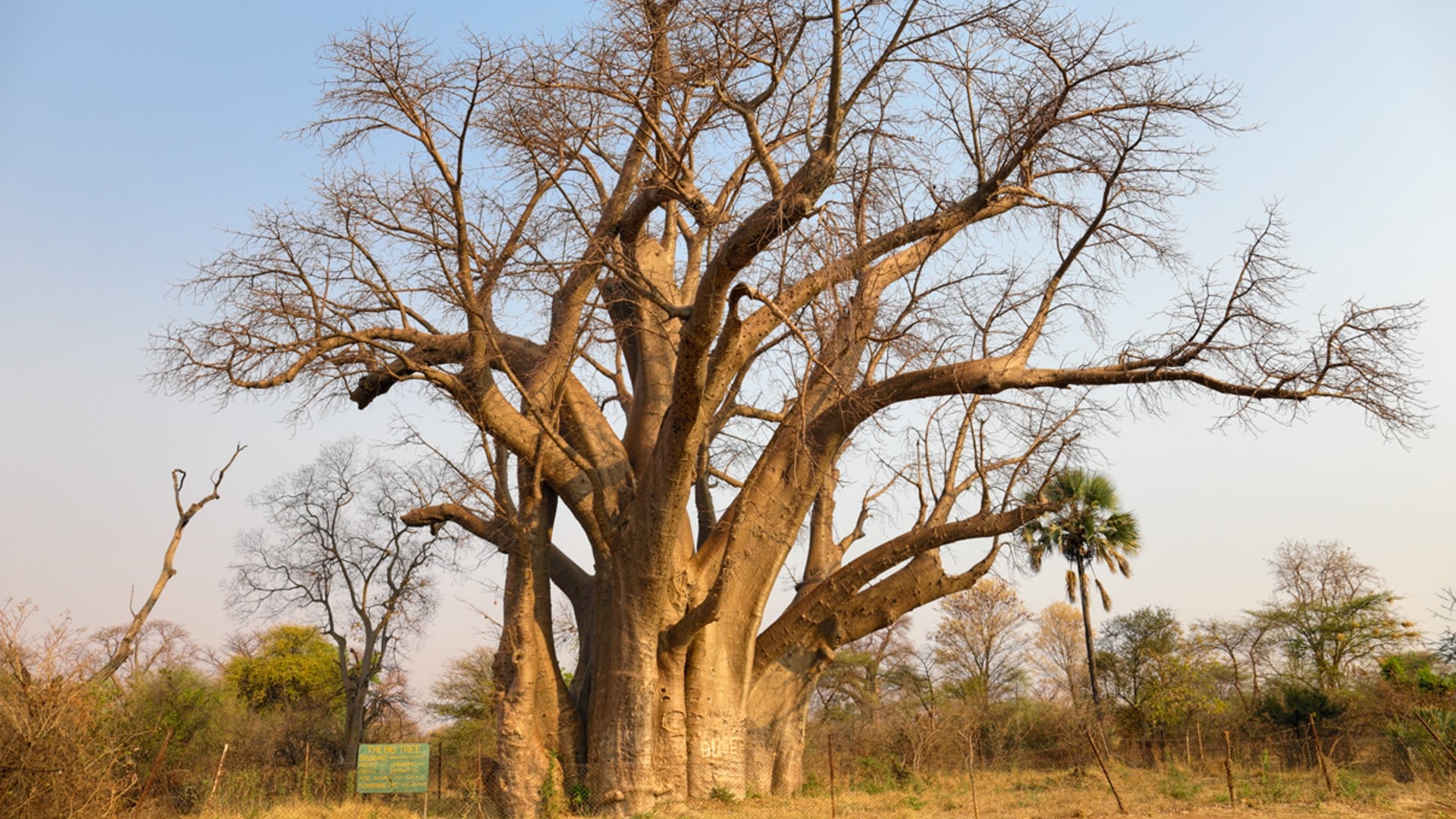African baobabs are among the oddest trees on Earth because of their Dr. Seuss-like looks, sausage-shaped fruit, and spacious interiors. Zimbabwe’s Big Tree (above), a 25-meter behemoth visited by hundreds of thousands of tourists each year on their way to Victoria Falls, is perhaps the most famous. Researchers have now determined the age of this remarkable specimen, which proved more difficult than originally thought.
It is impossible to date baobabs like most other trees. Sometimes they form no rings, and sometimes they form many. Counting their rings doesn’t tell us much about their age.
Researchers used radiocarbon dating instead in a new study. The team determined the baobab’s stems belong to three distinct generations by measuring the ratio of unstable carbon-14 to stable carbon-12 in fragments of wood from the Big Tree. Researchers reported last month in Dendrochronologia that the oldest tree dates back roughly 1150 years.
Based on the baobab’s size, the team originally expected the tree to be much older. Researchers say the tree grew at a particularly slow rate because it was periodically stressed by violent storms, which are known to plague the region. Prior estimates of the age of the Big Tree ranged from 1000 to 2000 years old.
The team suggests that radiocarbon can be used to age date other trees with complex growth histories. When determining the ages of these living legends, we can figure out whether they’ve been around long enough to weather significant climatic changes, five of every six African baobabs have died recently, probably due to climate change.
